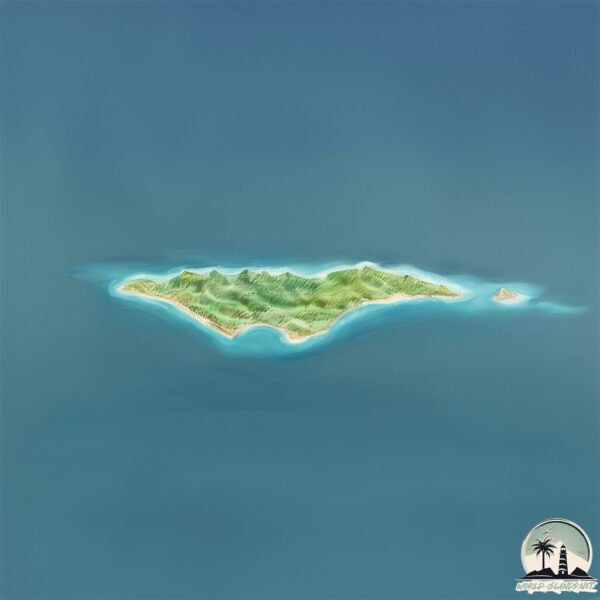Samana Cay

Welcome to Samana Cay, a Tropical island in the North Atlantic Ocean, part of the majestic Atlantic Ocean. This guide offers a comprehensive overview of what makes Samana Cay unique – from its geography and climate to its population, infrastructure, and beyond. Dive into the details:
- Geography and Size: Explore the island’s size and location.
- Climate and Weather: Weather patterns and temperature.
- Topography and Nature: Uncover the natural wonders of the island.
- Infrastructure and Travelling: Insights on reaching, staying, and making the most of your visit.
- News and Headlines: Latest News.
Geography and size of Samana Cay
Size: 33.8 km²
Coastline: 36.7 km
Ocean: Atlantic Ocean
Sea: North Atlantic Ocean
Continent: North America
Samana Cay is a Medium Island spanning 34 km² with a coastline of 37 km.
Archipel: Bahama Islands – An archipelago in the Atlantic Ocean, known for their stunning beaches, coral reefs, and vibrant culture.
Tectonic Plate: North America – Covers North America and parts of the Atlantic and Arctic Oceans, characterized by diverse geological features and varying levels of seismic activity.
The geographic heart of the island is pinpointed at these coordinates:
Latitude: 23.08692321 / Longitude: -73.74745776
Climate and weather of Samana Cay
Climate Zone: Tropical
Climate Details: Tropical Savanna, Wet
Temperature: Hot
Climate Characteristics: Defined by distinct wet and dry seasons with high temperatures year-round. Pronounced rainfall occurs during the wet season, while the dry season is marked by drought.
Topography and nature of Samana Cay
Timezone: UTC-05:00
Timezone places: America/New_York
Max. Elevation: 12 m
Mean Elevation: -2 m
Vegetation: Open Woodland
Tree Coverage: 40%
The mean elevation is -2 m. The highest elevation on the island reaches approximately 12 meters above sea level. The island is characterized by Plains: Flat, low-lying lands characterized by a maximum elevation of up to 200 meters. On islands, plains are typically coastal lowlands or central flat areas.
Dominating Vegetation: Open Woodland
Characterized by sparsely distributed trees with open canopy allowing sunlight to penetrate, supporting grasses and shrubs underneath. Often found in drier or transitional environments. Samana Cay has a tree cover of 40 %.
Vegetation: 11 vegetation zones – Exceptionally Diverse Island
Islands with more than ten vegetation zones are among the most ecologically rich and varied in the world. These islands are akin to miniature continents, boasting an incredible array of ecosystems. The sheer range of habitats, from high peaks to deep valleys, rainforests to deserts, creates a mosaic of life that is unparalleled. They are crucial for conservation and ecological studies.
Infrastructure and Travelling to Samana Cay
Does the island have a public airport? no.
There is no public and scheduled airport on Samana Cay. The nearest airport is Colonel Hill Airport, located 55 km away.
Does the island have a major port? no.
There are no major ports on Samana Cay. The closest major port is COCKBURN TOWN, approximately 133 km away.
The mean population of Samana Cay is 1 per km². Samana Cay is Gently Populated. The island belongs to The Bahamas.
Continuing your journey, Crooked Island is the next notable island, situated merely km away.
Bahamas: Samana Cay 2/2/19



The Bahamas is classified as Developing region: Regions characterized by lower income levels, with economies in the process of industrialization and modernization. The level of income is High income: nonOECD.
News – Latest Updates and Headlines from Samana Cay
Stay informed with the most recent news and important headlines from Samana Cay. Here’s a roundup of the latest developments.
Please note: The data used here has been primarily extracted from satellite readings. Deviations from exact values may occur, particularly regarding the height of elevations and population density. Land area and coastline measurements refer to average values at mean high tide.
